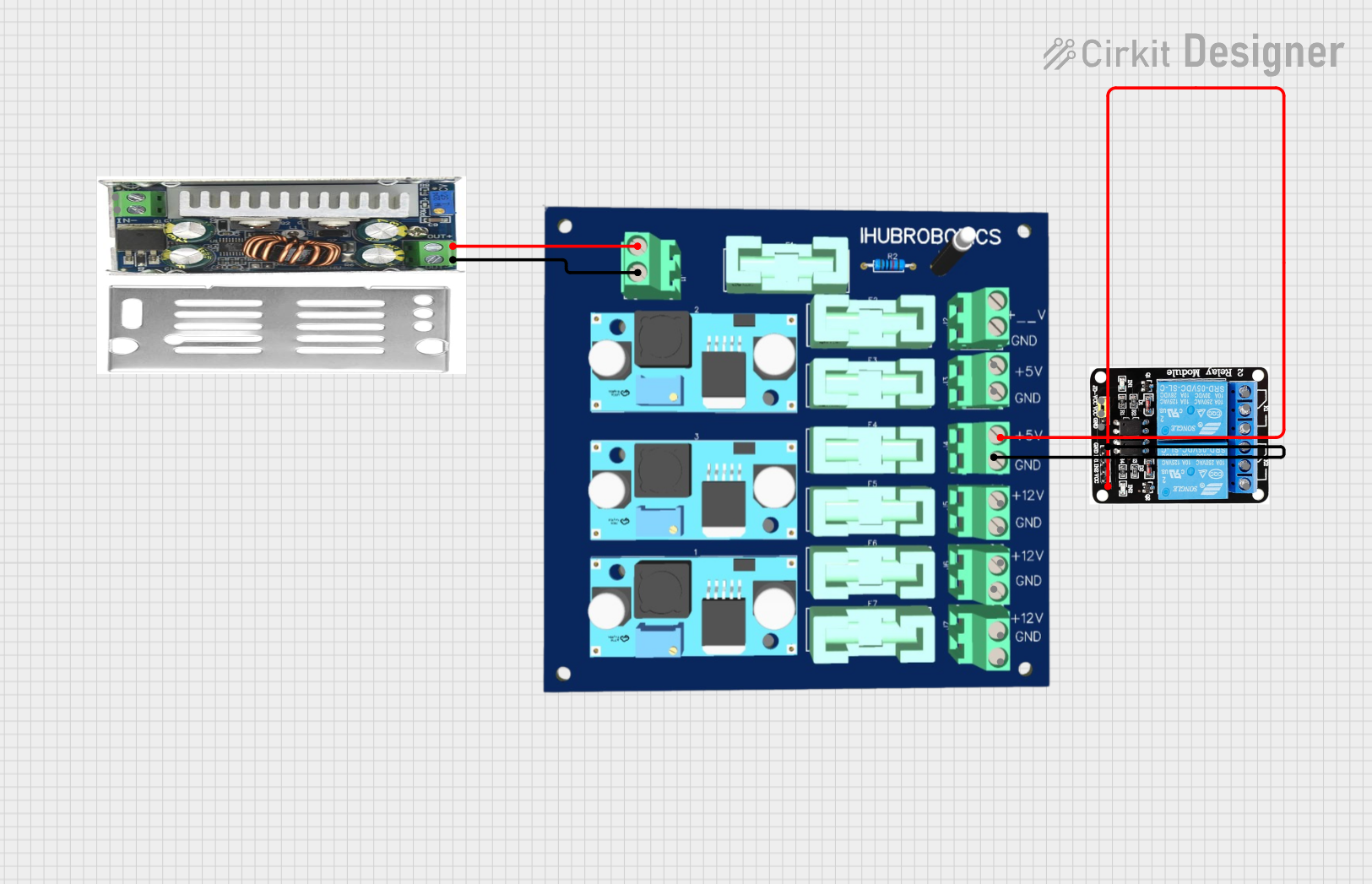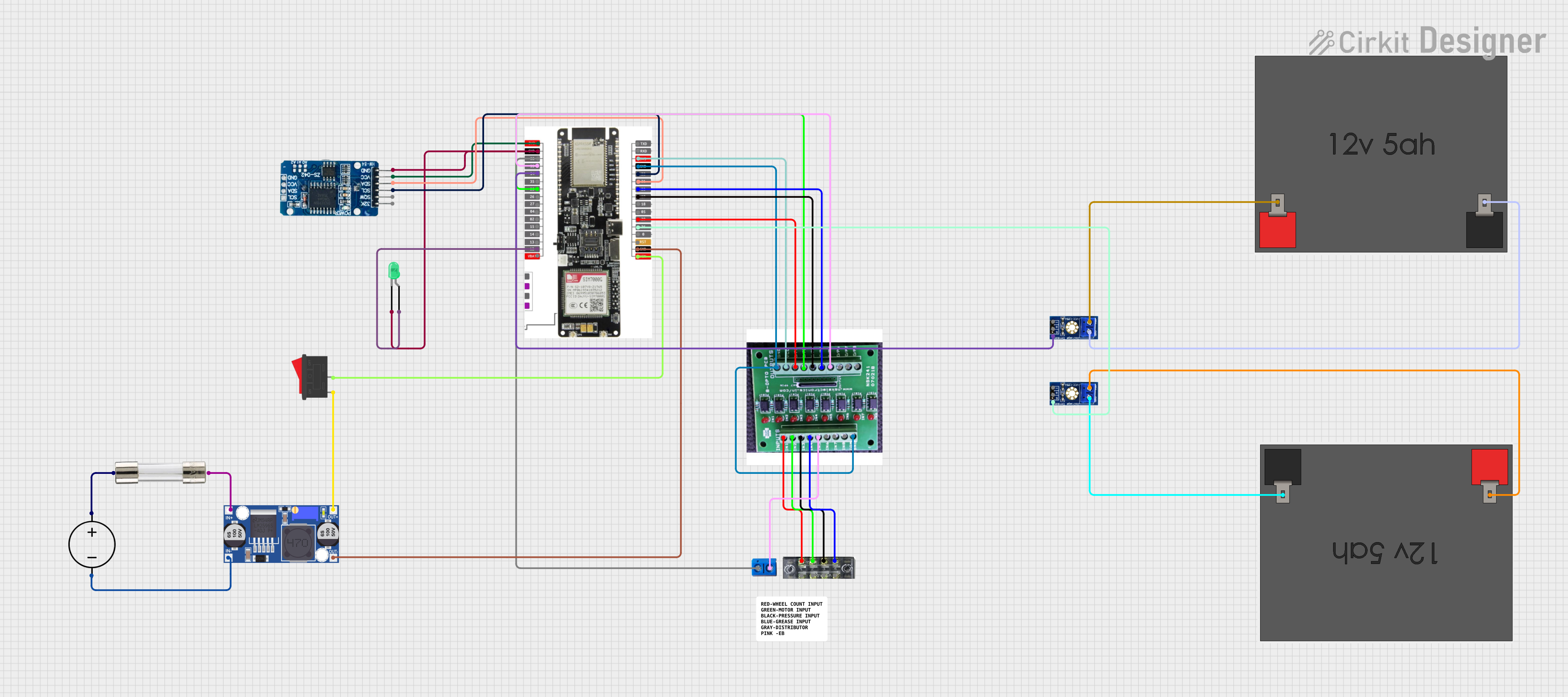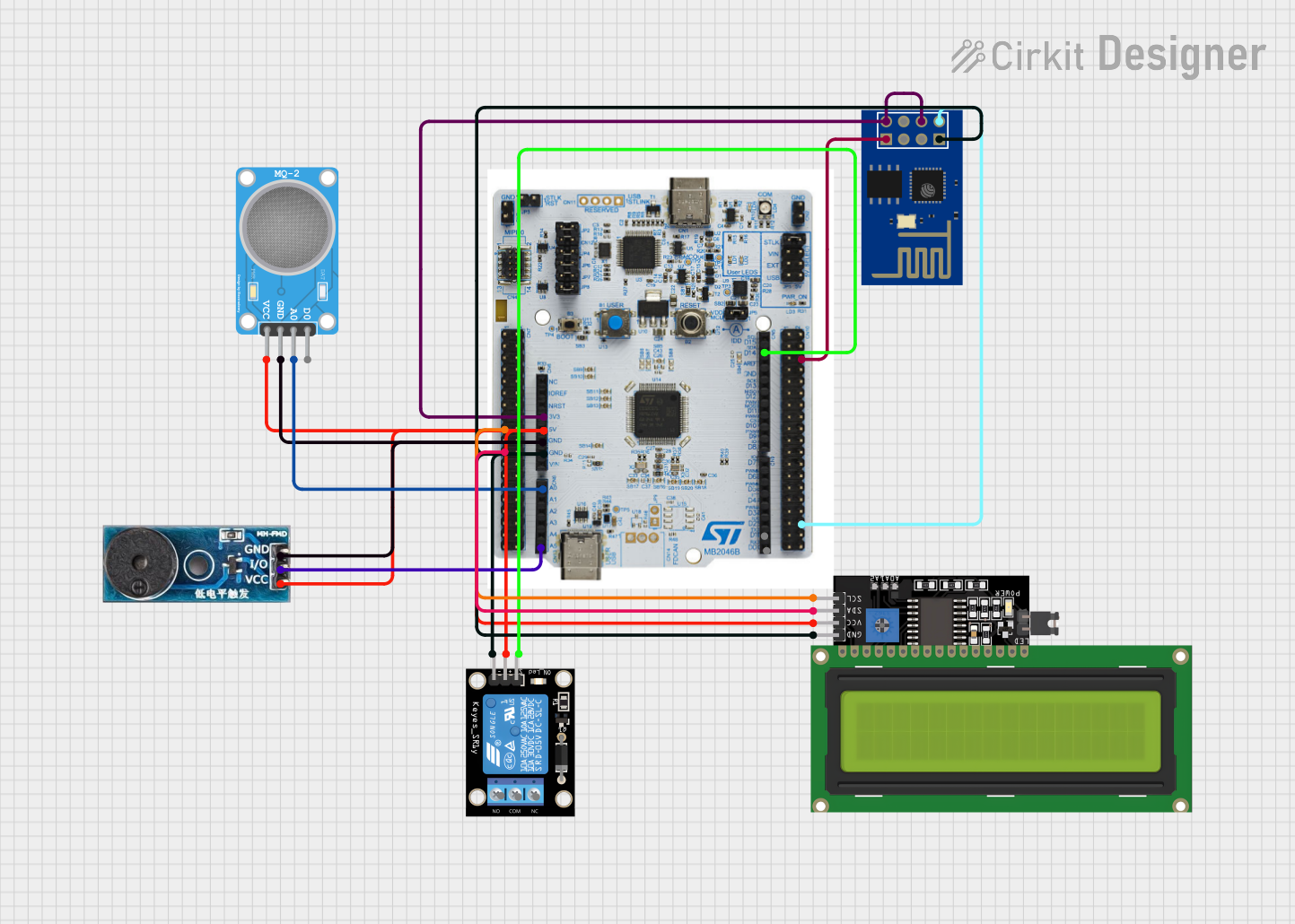
How to Use Contaceur modulaire 2NC: Examples, Pinouts, and Specs

 Design with Contaceur modulaire 2NC in Cirkit Designer
Design with Contaceur modulaire 2NC in Cirkit DesignerIntroduction
The Contactor Modulaire 2NC by TOMZN is a modular contactor equipped with two normally closed (NC) contacts. It is designed for controlling electrical circuits by interrupting or completing the circuit path. This component is widely used in automation systems, lighting control, and industrial applications where reliable switching of electrical loads is required.
Explore Projects Built with Contaceur modulaire 2NC

 Open Project in Cirkit Designer
Open Project in Cirkit Designer
 Open Project in Cirkit Designer
Open Project in Cirkit Designer
 Open Project in Cirkit Designer
Open Project in Cirkit Designer
 Open Project in Cirkit Designer
Open Project in Cirkit DesignerExplore Projects Built with Contaceur modulaire 2NC

 Open Project in Cirkit Designer
Open Project in Cirkit Designer
 Open Project in Cirkit Designer
Open Project in Cirkit Designer
 Open Project in Cirkit Designer
Open Project in Cirkit Designer
 Open Project in Cirkit Designer
Open Project in Cirkit DesignerCommon Applications and Use Cases
- Lighting Control: Automating the switching of lighting systems in residential, commercial, or industrial environments.
- HVAC Systems: Controlling heating, ventilation, and air conditioning equipment.
- Industrial Automation: Managing motors, pumps, and other machinery in automated systems.
- Energy Management: Used in load-shedding systems to optimize energy consumption.
Technical Specifications
The following table outlines the key technical details of the Contactor Modulaire 2NC:
| Parameter | Value |
|---|---|
| Manufacturer | TOMZN |
| Contact Configuration | 2 Normally Closed (2NC) |
| Rated Voltage (AC) | 230V AC |
| Rated Current | 25A |
| Coil Voltage | 230V AC |
| Frequency | 50/60 Hz |
| Mechanical Durability | 1,000,000 operations |
| Electrical Durability | 100,000 operations |
| Mounting Type | DIN Rail |
| Operating Temperature | -5°C to +40°C |
| Dimensions (L x W x H) | 36mm x 90mm x 65mm |
| Weight | 200g |
Pin Configuration and Descriptions
The Contactor Modulaire 2NC has the following terminal layout:
| Terminal | Description |
|---|---|
| A1 | Coil input terminal (live) |
| A2 | Coil input terminal (neutral) |
| 1L1 | Input terminal for the first NC contact |
| 2T1 | Output terminal for the first NC contact |
| 3L2 | Input terminal for the second NC contact |
| 4T2 | Output terminal for the second NC contact |
Usage Instructions
How to Use the Contactor in a Circuit
- Mounting: Secure the contactor onto a standard DIN rail in your electrical panel.
- Wiring the Coil:
- Connect the live wire to terminal A1 and the neutral wire to terminal A2.
- Ensure the coil voltage matches the rated voltage (230V AC).
- Wiring the Load:
- For the first NC contact, connect the input wire to terminal 1L1 and the output wire to terminal 2T1.
- For the second NC contact, connect the input wire to terminal 3L2 and the output wire to terminal 4T2.
- Testing:
- Energize the coil by applying voltage to terminals A1 and A2. The NC contacts will open, interrupting the circuit.
- De-energize the coil to return the contacts to their normally closed state.
Important Considerations and Best Practices
- Voltage Compatibility: Ensure the coil voltage and load voltage are within the rated specifications.
- Load Current: Do not exceed the rated current of 25A to avoid damage to the contactor.
- Wiring: Use appropriately rated wires and ensure all connections are secure to prevent overheating or arcing.
- Environment: Install the contactor in a dry, well-ventilated area within the specified operating temperature range (-5°C to +40°C).
- Maintenance: Periodically inspect the contactor for signs of wear or damage, especially in high-duty-cycle applications.
Example: Using the Contactor with an Arduino UNO
The Contactor Modulaire 2NC can be controlled using an Arduino UNO and a relay module. Below is an example circuit and code:
Circuit Description
- The Arduino controls a relay module, which in turn energizes the contactor's coil.
- The contactor switches a 230V AC load (e.g., a light bulb).
Code Example
// Define the pin connected to the relay module
const int relayPin = 7;
void setup() {
// Set the relay pin as an output
pinMode(relayPin, OUTPUT);
// Ensure the relay is off at startup
digitalWrite(relayPin, LOW);
}
void loop() {
// Turn on the relay (energize the contactor coil)
digitalWrite(relayPin, HIGH);
delay(5000); // Keep the contactor energized for 5 seconds
// Turn off the relay (de-energize the contactor coil)
digitalWrite(relayPin, LOW);
delay(5000); // Wait for 5 seconds before repeating
}
Note: Ensure proper isolation between the Arduino and the high-voltage circuit. Use a relay module with optocoupler isolation for safety.
Troubleshooting and FAQs
Common Issues and Solutions
| Issue | Possible Cause | Solution |
|---|---|---|
| Contactor does not switch when energized | Coil voltage is incorrect or not applied | Verify the coil voltage and connections. |
| Contacts remain open even when de-energized | Mechanical failure or debris in the contact | Inspect and clean the contactor. Replace if necessary. |
| Excessive heating during operation | Overloaded contacts or loose connections | Check the load current and tighten connections. |
| Humming noise from the contactor | Coil voltage fluctuation or loose mounting | Stabilize the voltage and secure the contactor. |
FAQs
Can I use the contactor for DC loads?
- No, the Contactor Modulaire 2NC is designed for AC loads only.
What happens if the coil voltage is too low?
- The contactor may fail to operate or may chatter, leading to unreliable switching.
Can I use this contactor for motor control?
- Yes, but ensure the motor's starting current does not exceed the contactor's rated current (25A).
How do I know if the contactor is faulty?
- Test the coil with a multimeter for continuity. If the coil is intact but the contacts do not switch, the contactor may need replacement.